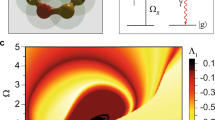Abstract
Dissipative structures consisting of a few macrovariables arise out of a sea of reversible microvariables. Unexpected residual effects of the massive underlying reversibility, on the macrolevel, cannot therefore be excluded. In the age of molecular-dynamics simulations, explicit dissipative structures like excitable systems (“explicit observers”) can be generated in a computer from first reversible principles. A class of classical, 1-D Hamiltonian systems of chaotic type is considered which has the asset that the trajectorial behavior in phase space can be understood geometrically. If, as natural, the number of particle types is much smaller than that of particles, the Gibbs symmetry must be taken into account. The permutation invariance drastically changes the behavior in phase space (quasi-periodization). The explicit observer becomes effectively reversible on a short time scale. In consequence, his ability to measure microscopic motions is suspended in a characteristic fashion. Unlike quantum mechanics whose “holistic” nature cannot be transcended, the present holistic (internal-interface) effects—mimicking the former to some extent—can be understood fully in principle.
Similar content being viewed by others
References
L. Boltzmann,Lectures on Gas Theory, Vol. 2 (in German). (J. A. Barth, Leipzig, 1898), Sec. 90.
E. P. Wigner,Group Theory and Its Application to the Quantum Mechanics of the Atomic Spectra (Academic Press, New York, 1959; first German edn.: Vieweg, Braunschweig, 1931).
H. Goldstein,Classical Mechanics (Addison-Wesley, Reading, Massachusetts, 1980), p. 332.
G. Nicolis and I. Prigogine,Self-Organization in Nonequilibrium Systems (Wiley, New York, 1977).
L. Boltzmann, “On the question of the objective existence of the processes in inanimate nature” (in German),Sitz. Kais. Akad. Wiss. (Vienna)Math.-Naturw. Kl. 60(IIa), 83 (1897), footnote 11.
K. Gödel,On Formally Undecidable Propositions (Basic Books, New York, 1962);Monatsh. Math. Phys. 38, 173 (1931).
A. Einstein, “Autobiographical Notes,” inAlbert Einstein, Philosopher-Scientist, P. A. Schilpp, ed. (Open Court, La Salle, Illinois, 1949).
A. Keller,The Infancy of Atomic Physics: Hercules in His Cradle (Clarendon, Oxford, 1983), pp. 20 and 52.
M. Toda,Theory of Nonlinear Lattices (Springer, Berlin, 1981).
E. Cunningham,Proc. London Math. Soc. 8, 77 (1909).
B. J. Berne, ed.,Statistical Mechanics, Part B: Time-Dependent Processes (Plenum, New York, 1977), Chaps. 1 and 2.
O. E. Rössler,Lecture Notes in Physics, Vol. 179, Springer, New York (1983), p. 67.
O. E. Rössler, “A chaotic 1-D gas: some implications,” inProceedings of the First International Conference on the Physics of Phase Space (University of Maryland, May 1986), Y. S. Kim and W. W. Zachary, eds. (Springer, New York, in press).
O. E. Rössler and M. Hoffmann, “Quasiperiodization in classical hyperchaos,”J. Comp. Chem. 7 (1987), in press.
L. Bunimovich and Ya. G. Sinai,Comm. Math. Phys. 78, 247 (1980).
J. L. Hudson and O. E. Rössler, inDynamics of Nonlinear Systems, V. Hlavacek, ed. (Gordon and Breach, New York, 1985), pp. 193–219.
K. D. Willamowski and O. E. Rössler,Z. Naturforsch. Teil A 35, 317 (1980).
J. C. Maxwell,Theory of Heat (Appleton, New York, 1872), p. 309.
J. W. Gibbs,Trans. Conn. Acad. 3, 108 (1875), Eq. (297).
J. W. Gibbs,Elementary Principles in Statistical Mechanics (Yale University Press, New Haven, 1902), Chap. 15.
H. Weyl,Symmetry (Princeton University Press, Princeton, 1952).
E. Schrödinger,Statistical Thermodynamics (Cambridge University Press, Cambridge, 1946), Chap. 8.
A. Bach,Lett. Nuovo Cimento 43, 483 (1985).
O. E. Rössler, “Endophysics,” inReal Brains, Artificial Minds, J. Casti and A. Karlqvist, eds. (Elsevier, New York, 1987).
E. Nelson, “Derivation of the Schrödinger equation from Newtonian mechanics,”Phys. Rev. 150, 1079 (1966).
N. Campbell,Nature (London) 107, 170 (1921);119, 779 (1927).
M. Gardner,Wheels, Life and Other Mathematical Amusements (Freeman, San Francisco, 1983);Sci. Am., November 1970.
S. Fredkin, “Digital information mechanics,” MIT preprint, March 1983.
D. Finkelstein, “Holistic methods in quantum logic,” inQuantum Theory and the Structures of Time and Space, Vol. 3, L. Castell, M. Drieschner, and C. F. von Weizsäcker, eds. (Carl Hanser, Munich, 1979), pp. 37–60.
H. Primas,Chemistry, Quantum Mechanics, and Reductionism (Springer, Berlin, 1983).
Author information
Authors and Affiliations
Additional information
Dedicated to Prof. Ilya Prigogine on the occasion of his 70th birthday.
Rights and permissions
About this article
Cite this article
Rössler, O.E. Explicit dissipative structures. Found Phys 17, 679–688 (1987). https://doi.org/10.1007/BF01889541
Received:
Issue Date:
DOI: https://doi.org/10.1007/BF01889541




